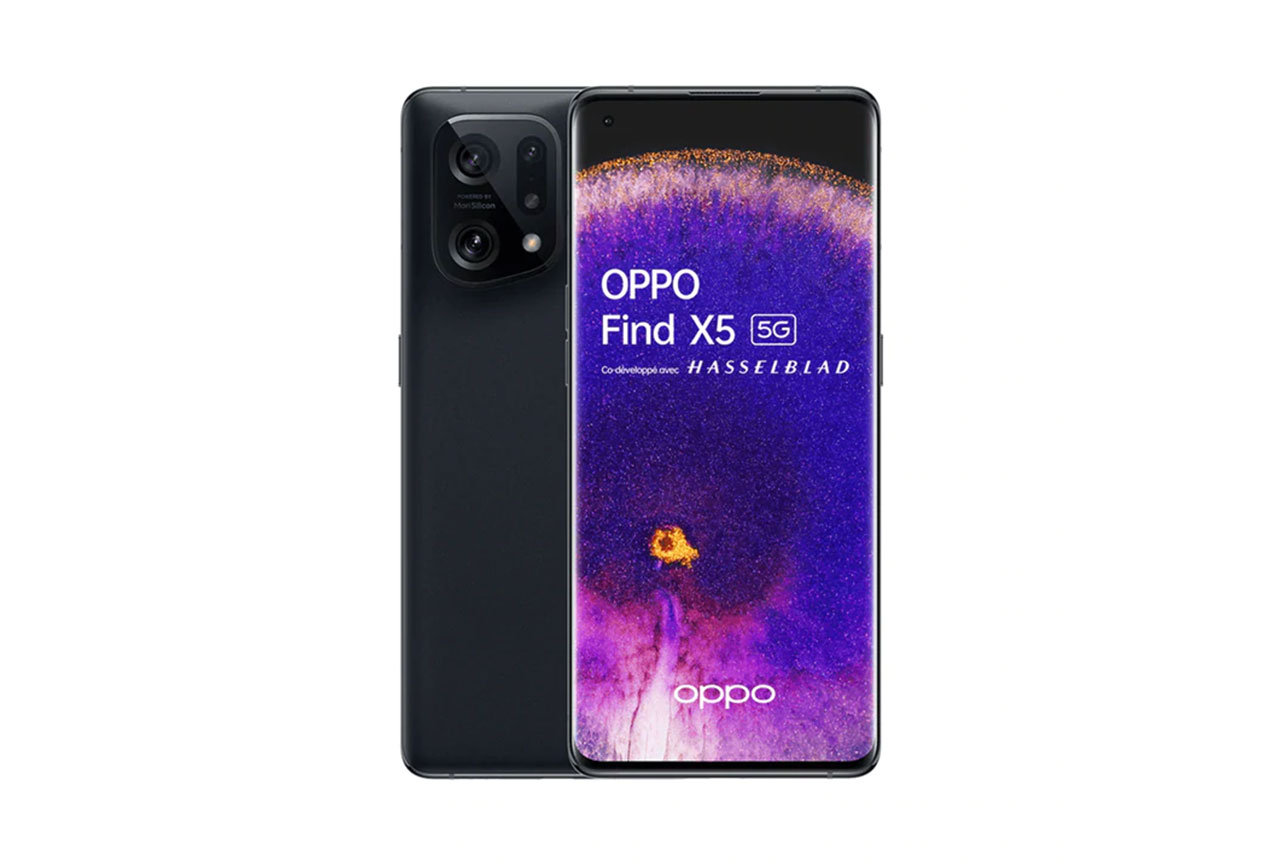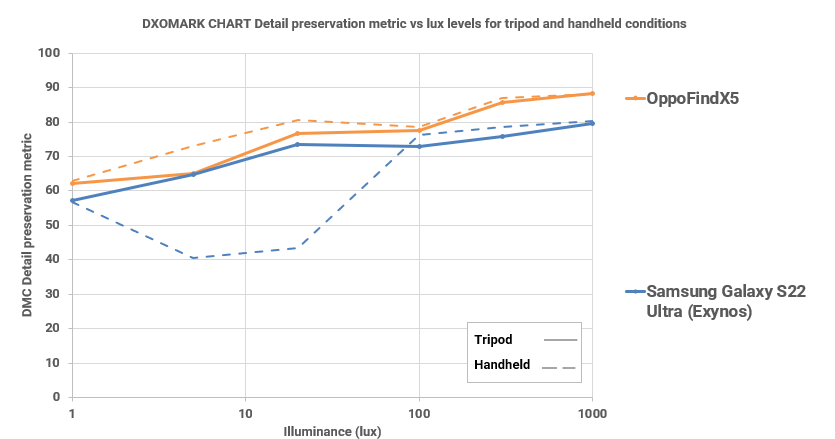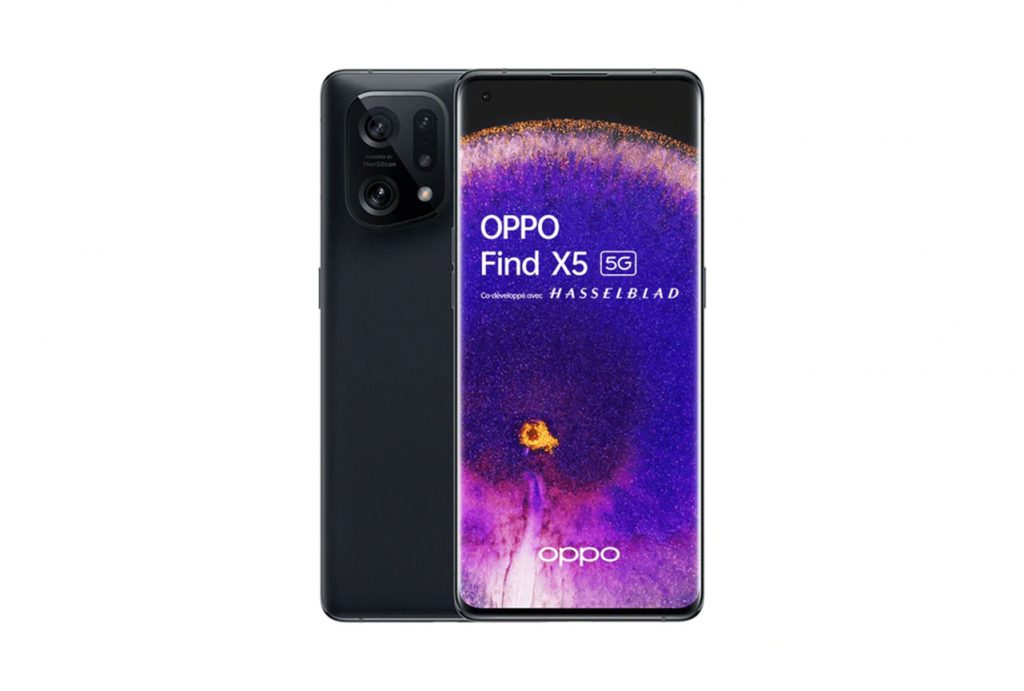The Oppo Find X5 is the slightly less feature-packed (and more affordable) alternative to the Pro model in Oppo’s X5 Ultra-Premium line. It swaps the Pro’s Snapdragon 8 Gen 1 chipset for the slightly older Snapdragon 888 and comes with a slightly smaller and lower-resolution display, but the camera hardware and specs look very similar to the top-of-the-line model’s.
Like for the X5 Pro, Swedish camera makers Hasselblad have contributed to the development and a Marisilicon X neural processing unit helps with image processing. Both primary and ultra-wide cameras feature 50MP 1/1.56″ image sensors, while the 13MP tele unit uses a smaller 1/3.4″ sensor. In video mode, you can record footage with up to 60 frames per second at 4K resolution.
Let’s see how the Oppo Find X5 did in our DXOMARK Camera test.
Key camera specifications:
- Primary: 50MP, 84°field of view, f/1.8-aperture lens, OIS, AF
- Ultra-wide: 50MP sensor, 110°field of view, f/2.2-aperture lens, AF
- Tele: 13MP sensor, 45°field of view, AF
- 4K at 30/60fps, 1080p at 30/60fps (4K/30fps tested)
About DXOMARK Camera tests: For scoring and analysis in our smartphone camera reviews, DXOMARK engineers capture and evaluate over 3000 test images and more than 2.5 hours of video both in controlled lab environments and in natural indoor and outdoor scenes, using the camera’s default settings. This article is designed to highlight the most important results of our testing. For more information about the DXOMARK Camera test protocol, click here. More details on how we score smartphone cameras are available here.
Test summary
Scoring
Sub-scores and attributes included in the calculations of the global score.

Oppo Find X5


Use cases & Conditions
Use case scores indicate the product performance in specific situations. They are not included in the overall score calculations.
Outdoor
Photos & videos shot in bright light conditions (≥1000 lux)
Indoor
Photos & videos shot in good lighting conditions (≥100lux)
Lowlight
Photos & videos shot in low lighting conditions (<100 lux)
Friends & Family
Portrait and group photo & videos
Pros
- Good exposure and wide dynamic range
- Good texture and detail
- Smooth zooming in preview
- Good detail in bright light and indoor videos
- Good video white balance in bright light video
Cons
- Strong exposure variation
- Focus delays and narrow depth of field
- Color casts, especially in low light
- Noise in bright light and indoors
- Haloing results in unnatural subject rendering
- Focus issues and exposure instabilities in night shots
- Limited dynamic range in video
- Lack of fine detail and unstable autofocus in low light video
With a DXOMARK Camera score of 122, the Oppo Find X5 isn’t quite up there with the very best in the Ultra-Premium segment but delivers an overall decent camera performance.
In photo mode, the camera produces good exposures and in bright light and indoors a very wide dynamic range ensures good detail in both highlight and shadow areas of the frame. However, in low light, the Oppo has a tendency to slightly underexpose in order to avoid highlight clipping, which often results in some clipping of shadows, and our testers also observed some strong exposure variation between shots. Colors are generally nice, but color casts are often noticeable, especially in low light. The camera captures good detail, but image noise could be better controlled in bright light and under typical indoor conditions.
The camera controls in preview are a plus point. Controls are smooth, making zooming in and out a pleasant affair. Night shots can be slightly problematic insofar as our testers observed focus issues and strong exposure instabilities across consecutive shoots.
Our lab measurements show that the Find X5 records very good detail across all light levels when compared to the Samsung Galaxy S22 Ultra (Exynos).

DMC detail preservation metric is an AI-based texture analysis trained on three selected crops of our DXOMARK chart. The closer the value is to 100, the higher is detail preservation.
When using the tele, the camera captures nice colors and produces accurate exposures. The level of detail is generally good, even at long zoom factors. However, some loss of detail can be observed at intermediate tele zoom settings, before the Oppo switches from the primary camera to its tele camera module. The 15mm ultra-wide angle does a good job as well, both at its native focal length and when zooming in. When recording a series of shots our testers did observe some instabilities of anamorphosis (perspective distortion close to the edges of the frame), though.
When recording video, the Oppo Find X5 does well in bright light and under indoor conditions. White balance is generally pleasant as well, and like the class leader Apple iPhone 13, the Oppo is capable of smooth exposure transitions in difficult high-contrast scenes. In terms of dynamic range, the Find X5 is less impressive and footage often shows highlight and shadow clipping. Video color is generally nice, except in portrait scenes where skin tones can look too saturated. Noise is an area for improvement. It is quite intrusive in bright light videos and becomes worse as the light gets dimmer. This is also where the autofocus starts to show some instabilities.
In this sample clip, we can witness the Oppo Find X5’s limited dynamic range. Highlight clipping is visible in the bright window. The exposure adapts the wrong way (darker) when the model turns to face camera. Some noise is noticeable but the level of detail is quite high.





DXOMARK encourages its readers to share comments on the articles. To read or post comments, Disqus cookies are required. Change your Cookies Preferences and read more about our Comment Policy.